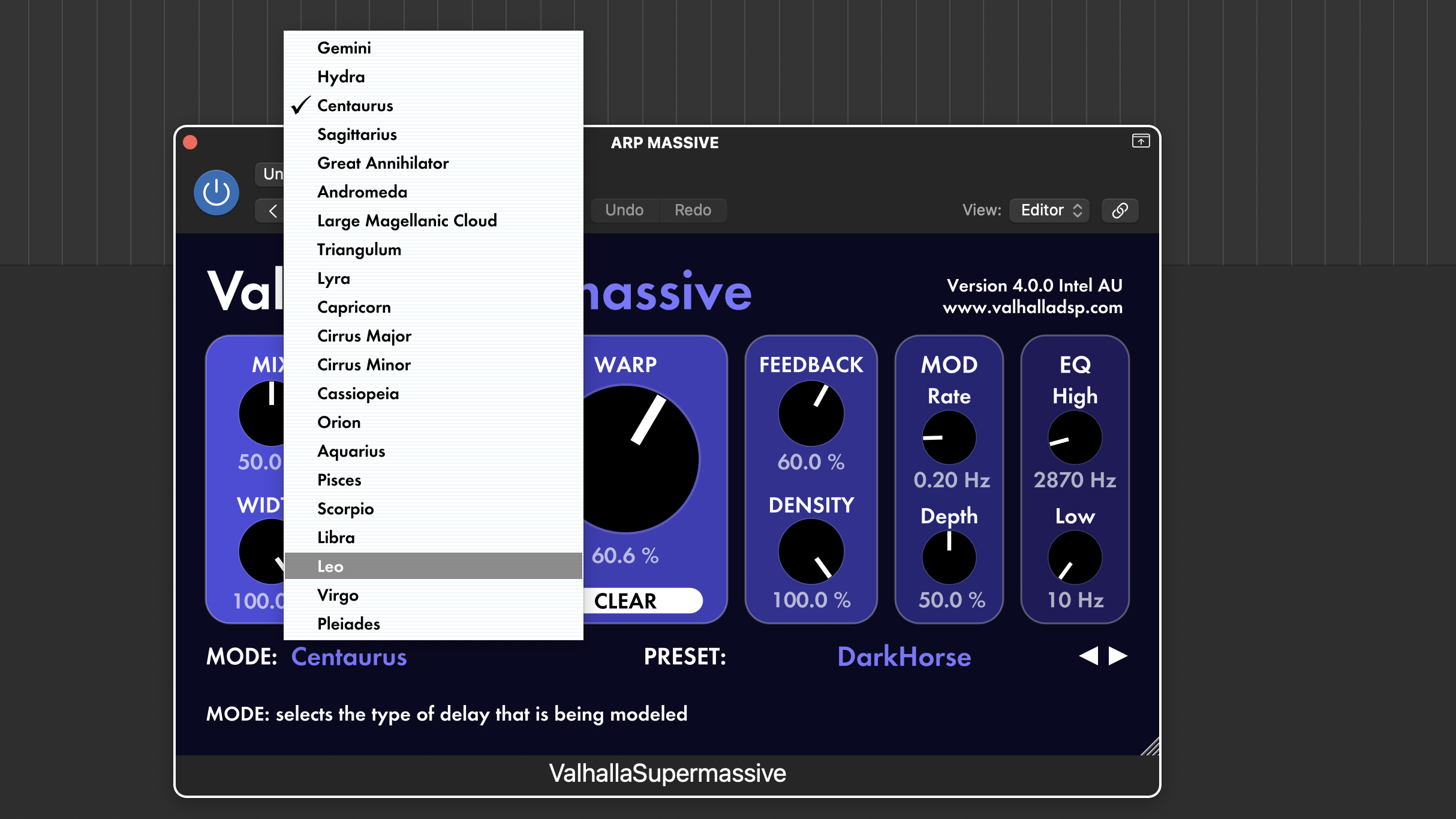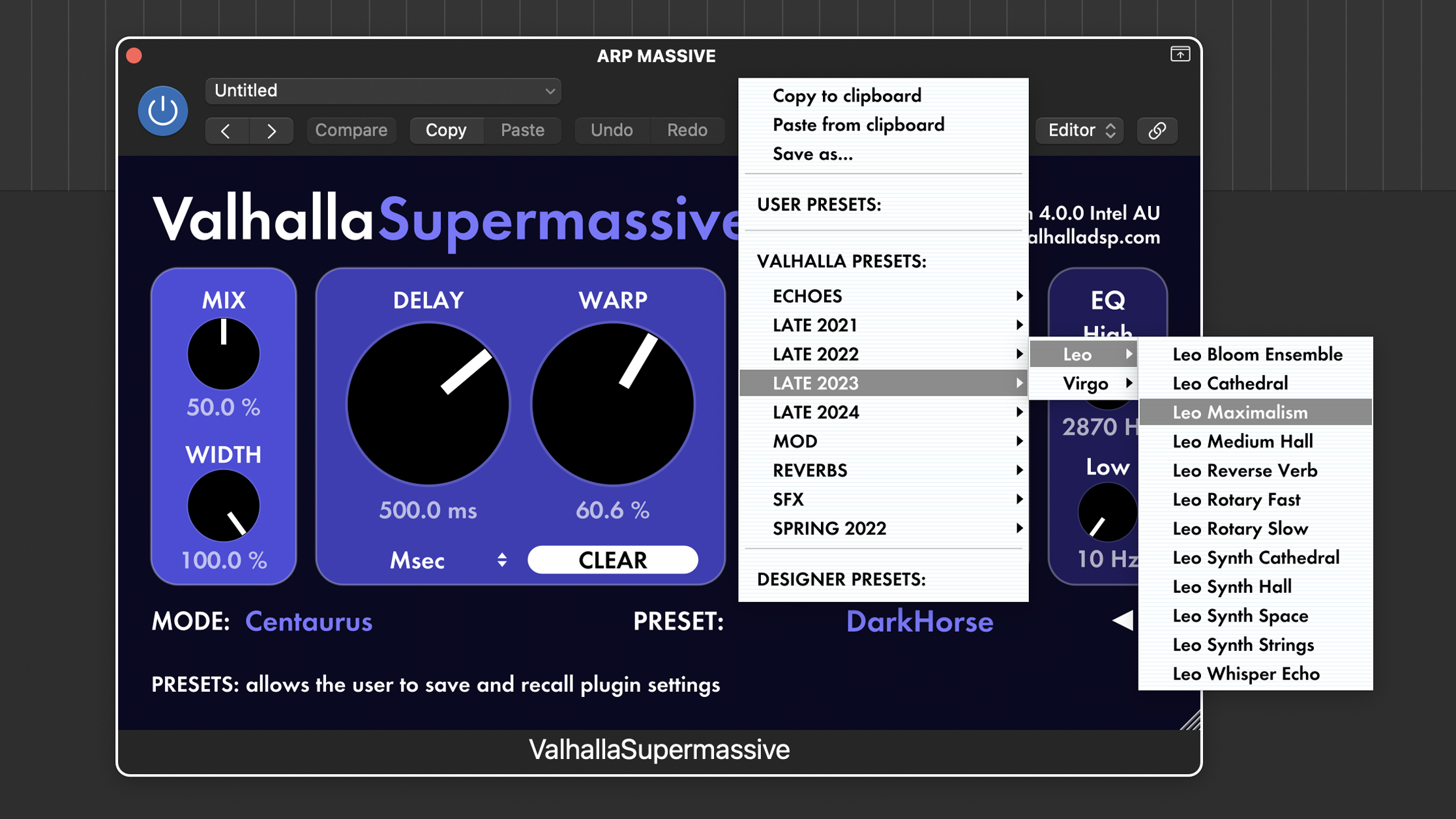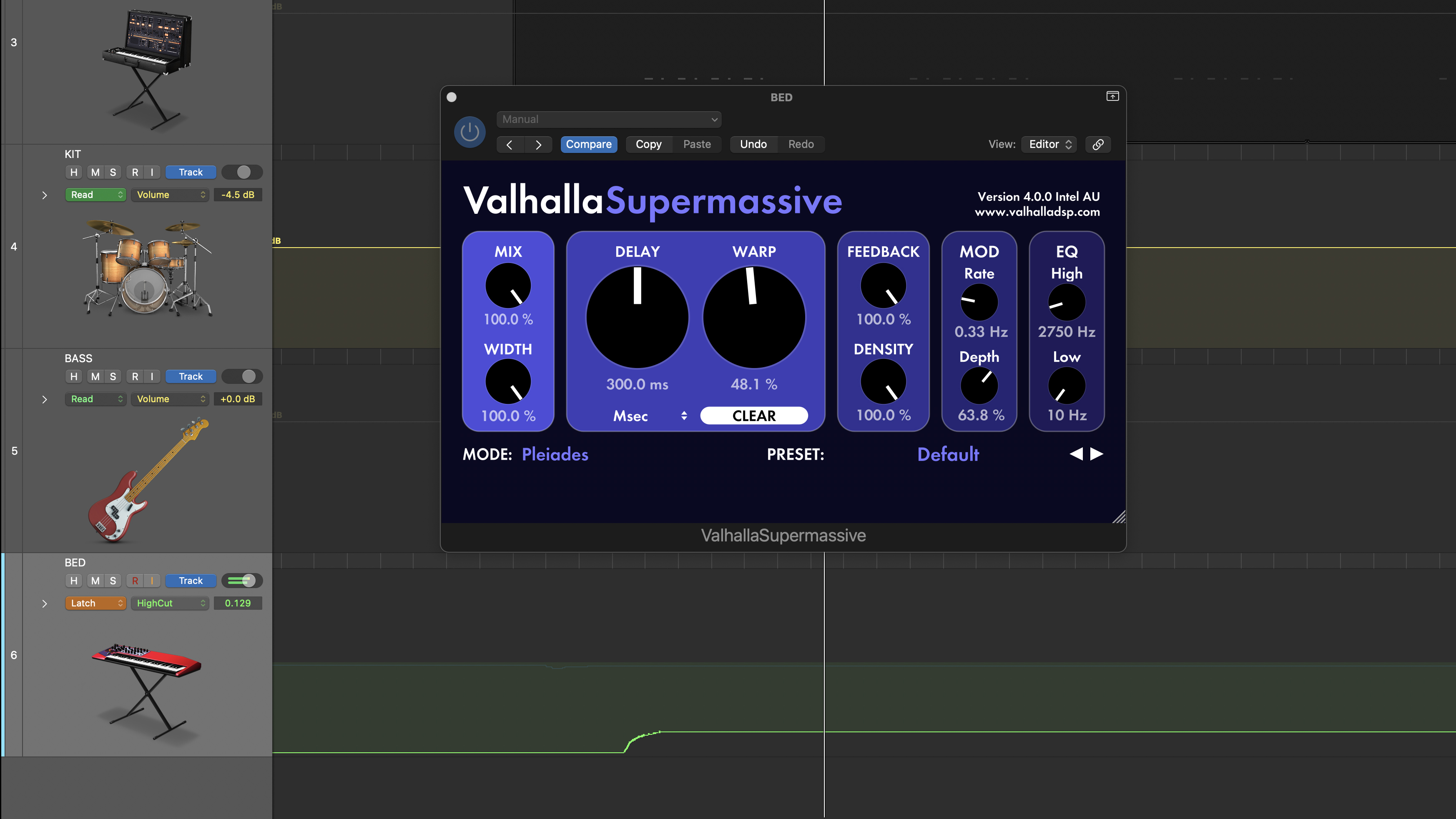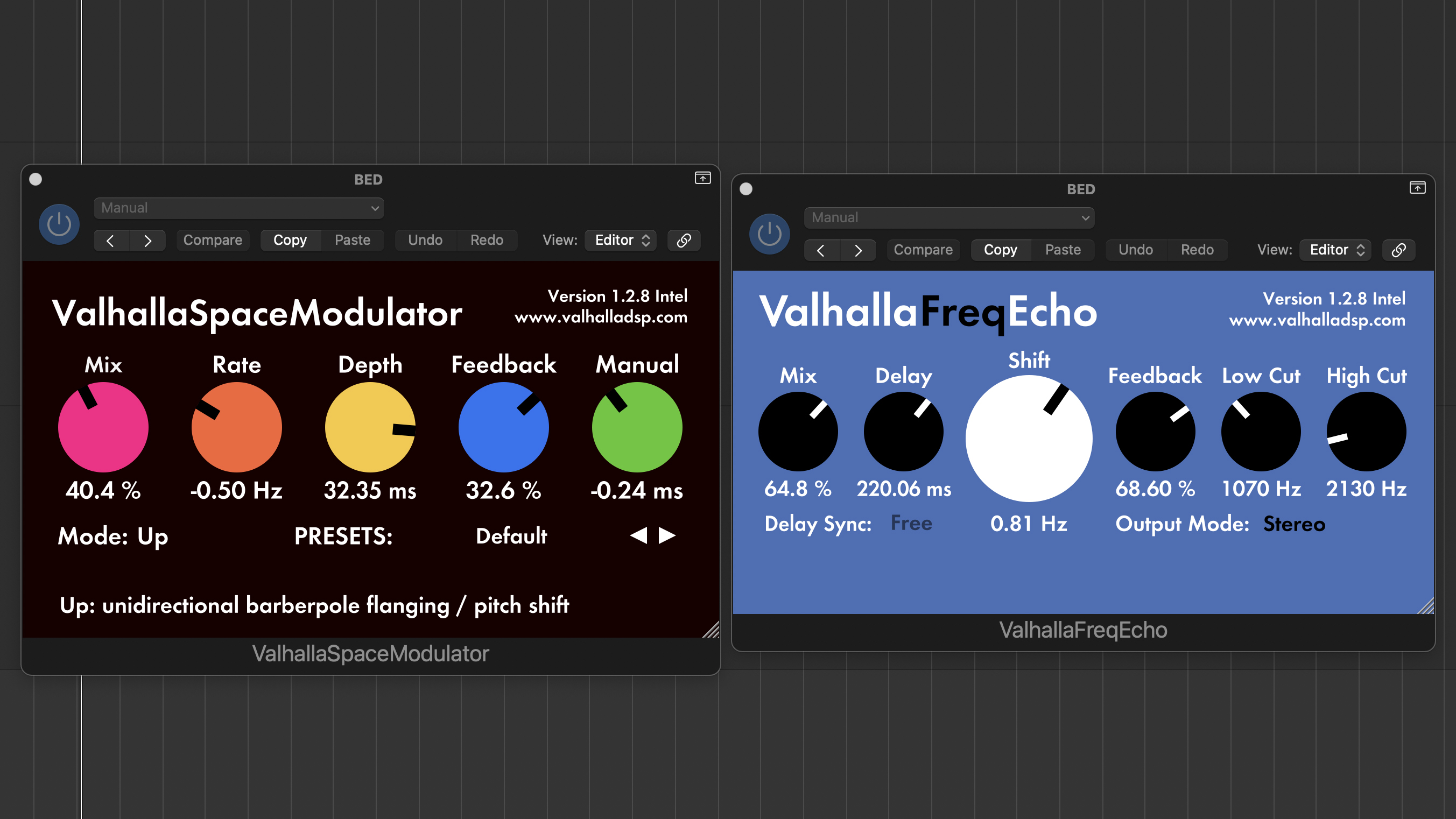"The perfect tool for textures, beds and drone effects": Fantastic (free) plugins and how to use them – Supermassive
Go large, as we explore the varied capabilities of ValhallaDSP's must-have delay-and-reverb plugin
Free plugins vary considerably in their capabilities, and more often than not are stripped back ‘lite’ versions of existing designs, with minimal support and no development. This is totally understandable, and if this generates interest in the design whilst directing users to more fully featured versions, then the process benefits both user and developer.
However, every once in a while a new freebie hits town that bucks this trend and when word got around that ValhallaDSP had decided to introduce a free reverb plugin, it was big news. The fact they have continued to develop, support and expand this plugin only makes the story more compelling.
Download Supermassive to follow this tutorial
The plugin is Supermassive (VST, AU, VST3, AAX), a delay line based algorithmic design that’s great for a number of tasks including, as the name implies, super big spaces.
Introduced just over four years ago, it’s based on algorithms designed by ValhallaDSP’s founder Sean Costello. However unlike some of his more task specific reverb designs such as Valhalla Room and Valhalla Plate, the algorithms are, in his words, more ‘unnatural’.
This makes Supermassive the perfect tool for creative tasks, or simply when you want something a bit different, and as we’ll find, it can be easily tailored to create a multitude of outcomes.
Super powers
Supermassive has the same utilitarian look as the whole ValhallaDSP range, and although this basic look may not offer much in the way of eye candy, it does make the plugin very easy to understand.
Want all the hottest music and gear news, reviews, deals, features and more, direct to your inbox? Sign up here.
The interface is divided into 5 key zones. On the far left you have the output Mix and Width controls, and the Width also includes a negative option, which flips the left and right outputs. On the far right are the output high and low cut filters, which are gentle 6dB/octave designs with overlapping frequency ranges (20kHz to 200Hz and 10Hz to 2kHz).
The remaining three sets of parameters directly influence the effect. Delay is the main control and sets the longest delay line in the feedback delay network. Use the drop down menu below to choose between millisecond (0 to 2000ms) and tempo synced options.
Next to this is the Warp control and this affects all the delay lengths within the feedback delay network relative to the main Delay setting. If you set this control to zero, all delays are the same length based on the Delay control, so the effect sounds more like a regular delay.
But as you wind up the Warp control the delay timings become more spread out and settings beyond 50% sound more like reverbs. In this section you’ll also find the delay buffer Clear button, and this provides an easy way to quickly silence the effect.
Using reverb to create textures, beds and drone effects is a classic technique and Supermassive is the perfect tool.
In the next section we have two further key parameters. Feedback adjusts the internal delay feedback within the networks, and as you increase this control you’ll hear the overall effect decay becoming longer.
Meanwhile, Density affects the delay blending. At very low settings the delays are very audible, but as you wind up the control there’s more delay mixing and left / right blending, so the sound gradually becomes more like a conventional reverb effect.
Finally, you have a modulation section. Mod Depth and Mod Rate control the multi-phase sine wave oscillator and this modulates the delay length. The two parameters are somewhat interrelated as the depth is also dependent on the rate setting. As you might imagine, the effect modulation is far more obvious when processing sustained sounds.

That’s the basics and as you can see the simple controls actually deliver a lot of tweaking flexibility. However, this is only the tip of the iceberg, as the real magic is in the modes.
Selected from the drop down menu at the bottom left, each mode is a different algorithm, with its own attack, sustain and decay characteristics. If you hover your cursor just below the mode name, you’ll get a brief description of what these characteristics are.
Take a spin through a few and you’ll appreciate there’s quite a bit of variety. In the latest version of plugin (v4.0) there are an impressive 21 modes, and this has gradually grown from the eight modes original included. Rounding things off are a bunch of presets, and you’ll find these have been expanded over time in parallel with the additional modes.
Super & massive
To get a feel for the breadth of sound Supermassive has to offer, it’s worth spinning through the presets. These are organised into categories that reflect its key capabilities, namely echoes, modulations, reverbs and special effects.
You’ve also got folders for each update, dedicated to the new Modes added, and these expand the options across these 4 categories. The common thread across all presets is that they offer something away from the ordinary. For example, within the echoes category you have presets that swell, such as Reverse Cloud Of 8ths, alongside patches that create more chaotic clusters of delays, (Cirrus Major Synth Echoes) or simply just go on and on (Quarter Note Echo Pattern).
Meanwhile in the reverbs category delay heavy sounds (Best Ballad Vocal), are joined by expansive deep reverbs (Billions And Billions or Leo Bloom Ensemble) as well as tight spaces (Lunar Lander 1969). The sound effects folder takes these concepts to the extreme, with some highly transformative or weird options (Barnard 33 or Vger).

Let's take a look at a couple of applications. It should come as no surprise that Supermassive excels at big spaces, and there are a number of great effects we can achieve with this type of reverb.
One of our favourites is the drop boom. This mainstay of many club styles can be tweaked for all manner of music genres, but consistent throughout is a rich, low effect with controlled high frequencies that spreads to create a bed of deep reverb.
For this kind of spot effect where our track is dedicated to one specific sound, it’s easiest to load up the effect as an insert, and here we’ve added an instance of Supermassive following the other channel inserts. With Density set to max, Decay set to 500 ms, Warp set to 100% and a suitably selected Mode (in this case we’ve used Leo), we have the basics sorted.
We can then tailor the effect accordingly using the Feedback (ours is at about 80%) and the filters. Here we set the High cut to about 12kHz and used the Mix control to blend the effect to taste.
Using reverb to create textures, beds and drone effects is a classic technique and Supermassive is the perfect tool. To get started load up a regular pad or string sound and bypass any additional processing such as delay or reverb. Launch a fresh instance of Supermassive as an insert and select your favoured mode, we’ve chosen Pleiades.
Set the Warp setting to about half. Play a single note and try adjusting some of the key parameters in real time. Start with the Feedback and Density. Increasing the Feedback is particularly useful as it extends the decay time, but changing the Density also influences how obvious the delays are and can be used to control how smeared the sound is.
Adjusting the Mix control so you hear more or only the wet signal is also a good option.

For a bit more flavour, and this is something you may want to automate within your DAW, try making small changes to the Warp and Delay controls in real time. This introduces temporary pitch changes to the effect.

It’s worth mentioning that ValhallaDSP produces two further free plugins - Space Modulator and Freq Echo and you can find these as well as their paid-for processors such as Vintage Verb, Shimmer, Room and Plate at the ValhallaDSP site.
Jon is a London based platinum award winning mixer, producer, composer and club remixer with a diverse CV that spans dance, pop, rock and music for media. He’s also a long term contributor to MusicRadar's music technology tutorials and reviews. Whether working alone or collaborating he usually handles final mixdowns, so you’ll also find MusicRadar peppered with his handy mixing tips.

